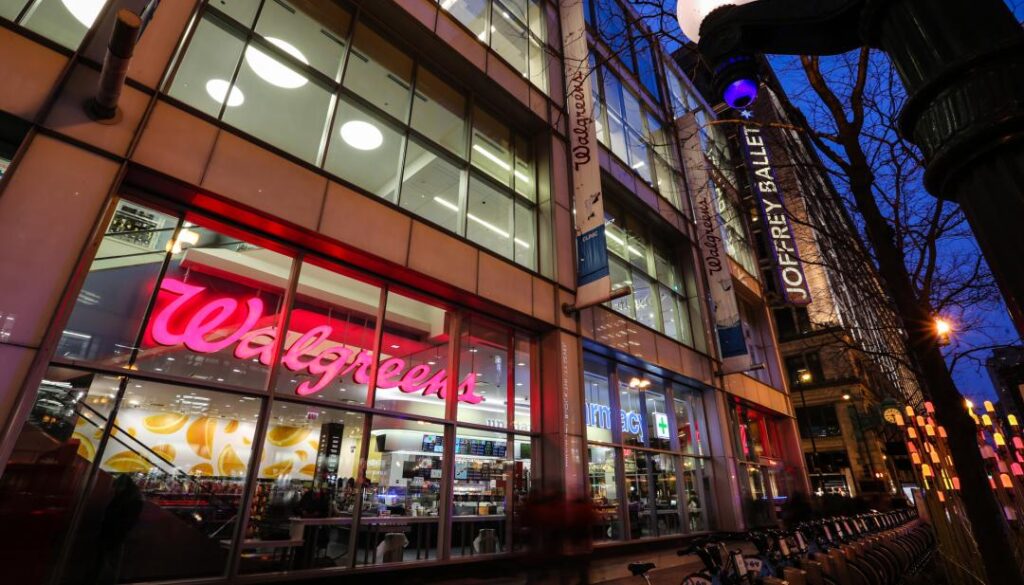
Walgreens is already in the process of closing at least 1,200 stores. Its soon-to-be new owner could be looking at increasing that number, as it looks to cut the corporate fat even more.
The pharmacy retailer announced late Thursday that it will be acquired and taken private by an affiliate of private equity firm Sycamore Partners, in a $10 billion deal.
Sycamore specializes in buying “distressed retailers” in need of a turnaround, like Staples, Belk and Talbots. And with Walgreens having lost 90% of its value over the past decade, the once-dominant drug store chain certainly qualifies as “distressed.”
Walgreens says the transaction will leave it “better positioned to become the first choice for pharmacy, retail and health services,” after falling behind CVS in market value and store count.
“Sycamore will provide us with the expertise and experience of a partner with a strong track record of successful retail turnarounds,” Walgreens CEO Tim Wentworth said in a statement. “While we are making progress against our ambitious turnaround strategy, meaningful value creation will take time, focus and change that is better managed as a private company.”
Walgreens has been in the process of “optimizing” its store count in recent months, after announcing plans last fall to close at least 1,200 – and potentially as many as 2,000 – of its more than 8,000 stores over the next three years. Doing so “will realign our footprint to a healthier store base that we believe will enable us to respond more dynamically to shifts in consumer behavior and buying preferences,” Wentworth said at the time.
Those consumer shifts are what have led Walgreens, and its competitors, to question whether the country really needs thousands of drug stores on seemingly every street corner in every community. People are doing more of their shopping online. They’re filling their prescriptions elsewhere. And while committed deal-seekers know how to work loyalty programs, sales and coupons to their advantage, what the average shopper is likely to see when they walk into a drug store these days is something that feels like an overpriced, under-supplied convenience store.
Aside from providing pharmacy services, drug stores like Walgreens were seen as “the place you can quickly pop to if you need a pint of milk or you need to buy replacement skin care or something like that,” GlobalData Retail analyst Neil Saunders told Marketplace. But lately, Walgreens “became very lazy, they just don’t bother with retail,” he said. “If your stores aren’t very good… then why would people bother to go in there?”
And if there are too many stores that too few people are going to, how can they all be profitable? While Walgreens’ rivals began seeing the writing on the wall and reacting to the consumer behavior shift by diversifying their business plans a while back, Walgreens was still looking to grow its physical footprint, buying the British pharmacy chain Boots, trying to buy Rite Aid, and ultimately buying nearly 2,000 Rite Aid stores – a move that doesn’t look so great in retrospect.
Sycamore hasn’t revealed any specific plans, with the deal not due to close until later this year. But, as a profit-seeking private equity investor, it’s likely to embark on a more thorough cost-cutting program, incorporating everything from divestitures of non-core assets, to layoffs to more store closings.
“Going private solves nothing in and of itself,” Saunders wrote in a LinkedIn post. “But it’s now the easiest way to extract value from the business.”
Walgreens’ most committed deal-seekers know all about “extracting maximum value” from the retailer. Now it’s investors’ turn to try to do the same.
Image source: Walgreens











They just opened a newly built WG near me, so hopefully they stick around.